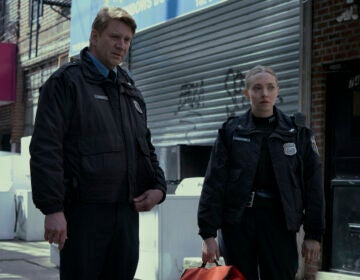Annual memorial focuses on hundreds of homeless youth
-
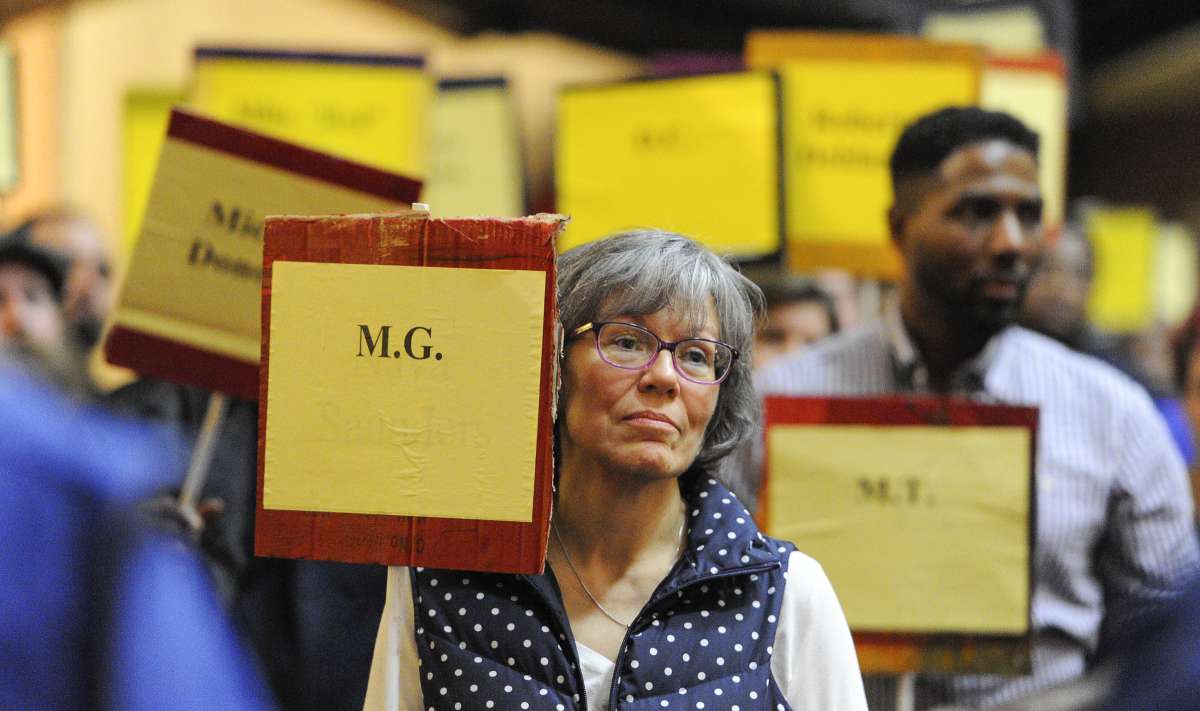
As the names of the deceased were read from the podium, participants rose from their seats holding the placards of homeless people who had passed away during the year. (Jonathan Wilson/for NewsWorks)
-
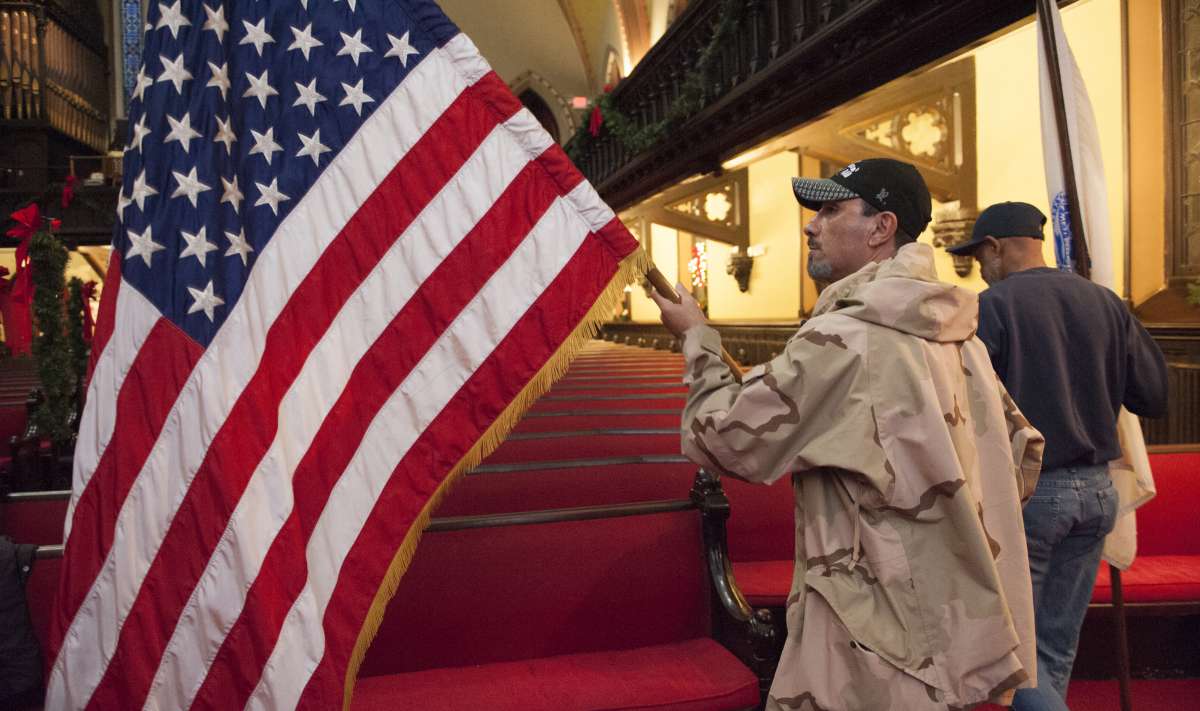
Benjamin Perez, a formerly homeless Army veteran unfurls the flag prior to the presentation of the colors at the Homeless Memorial Day service held at the Arch Street United Methodist Church in Center City. (Jonathan Wilson/for NewsWorks)
-
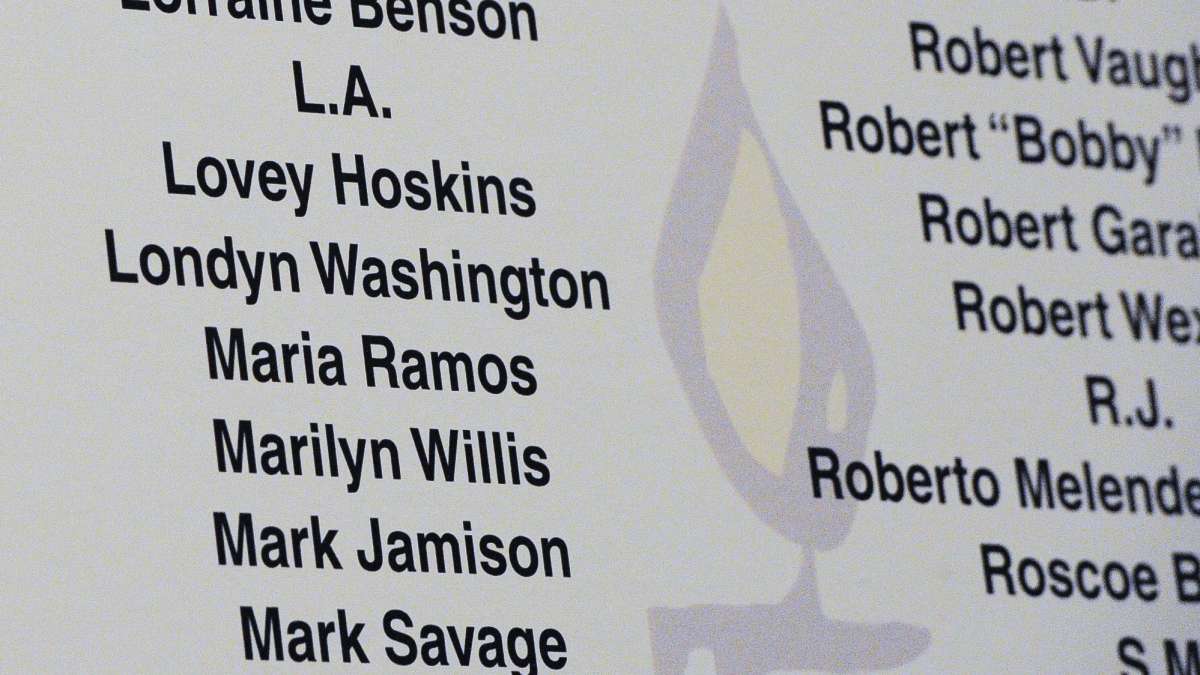
Shown are some of the more than 100 homeless men and women who died in Philadelphia in 2015. (Jonathan Wilson/for NewsWorks)
-
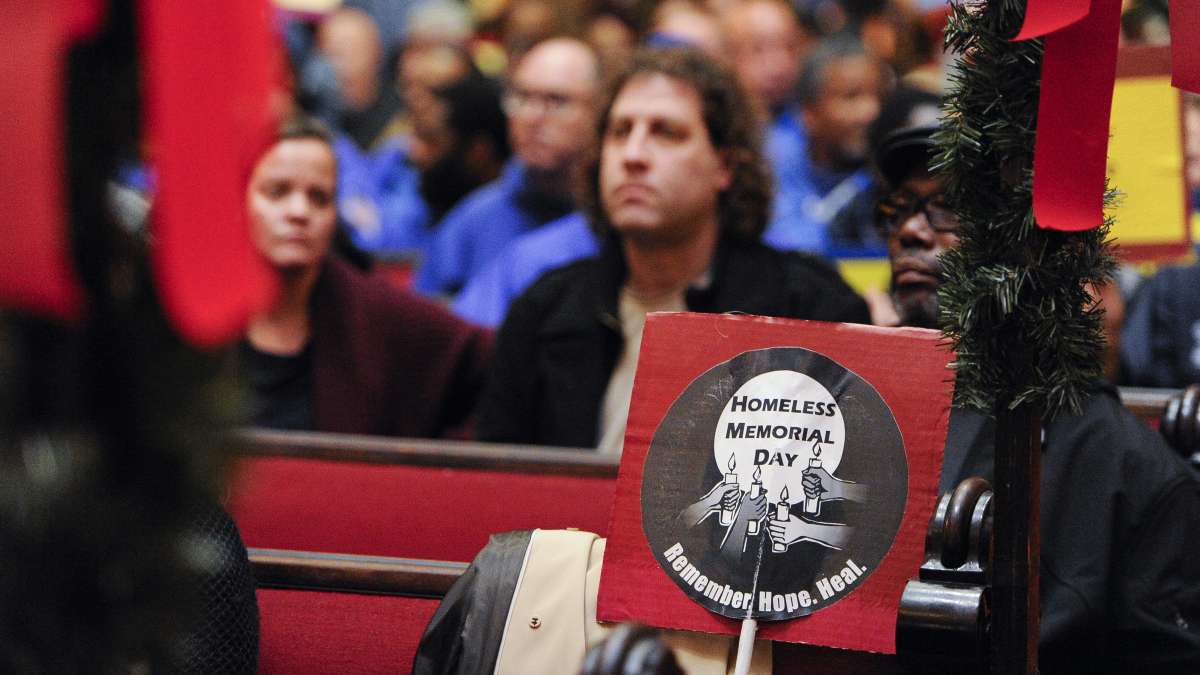
People from throughout Philadelphia came to participate in Homeless Memorial Day service at the Arch Street United Methodist Church in Center City. (Jonathan Wilson/for NewsWorks)
-
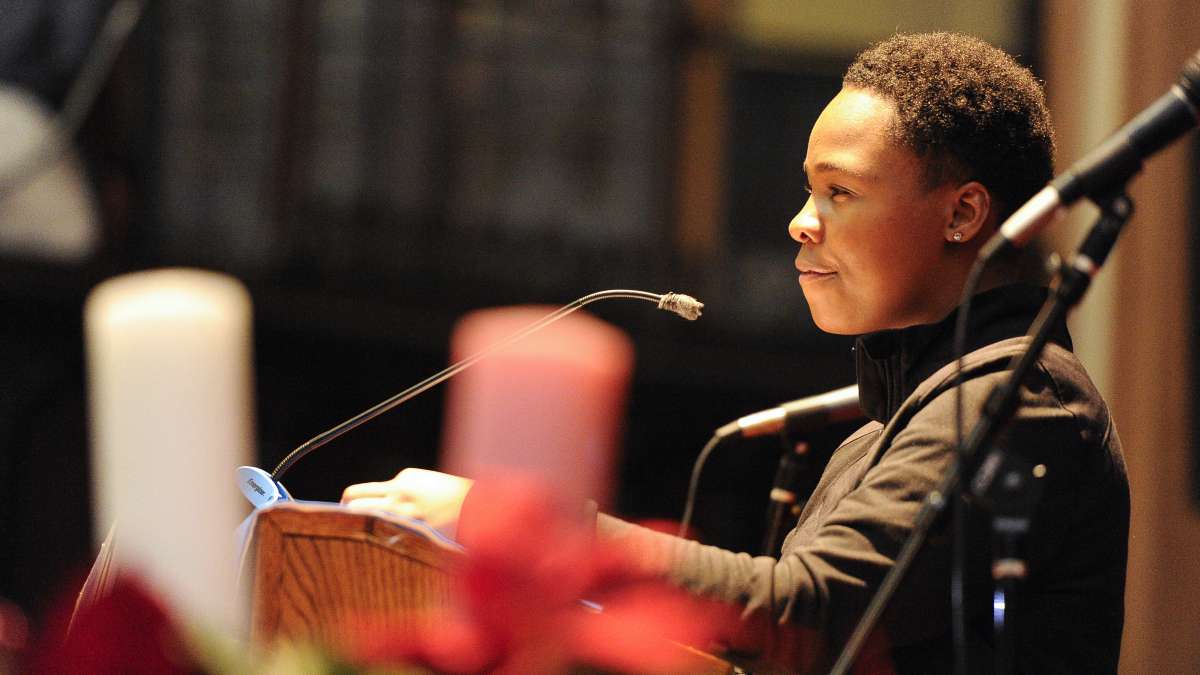
Shakema King relays her experience of homelessness, abuse and pregnancy and how Covenant House is helping her rebuild her life. (Jonathan Wilson/for NewsWorks)
-
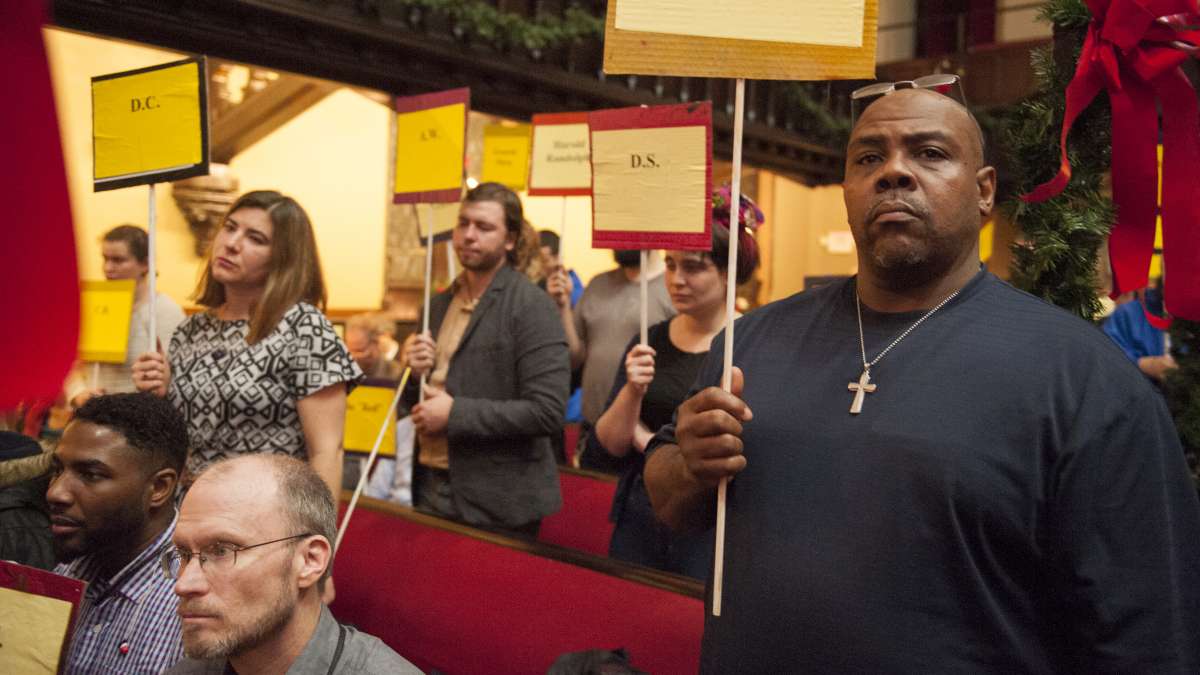
Pro Act Lead Coordinator Jerome Grause, and other participants hold signs with the names of deceased members of the homeless community during the memorial service. (Jonathan Wilson/for NewsWorks)
-
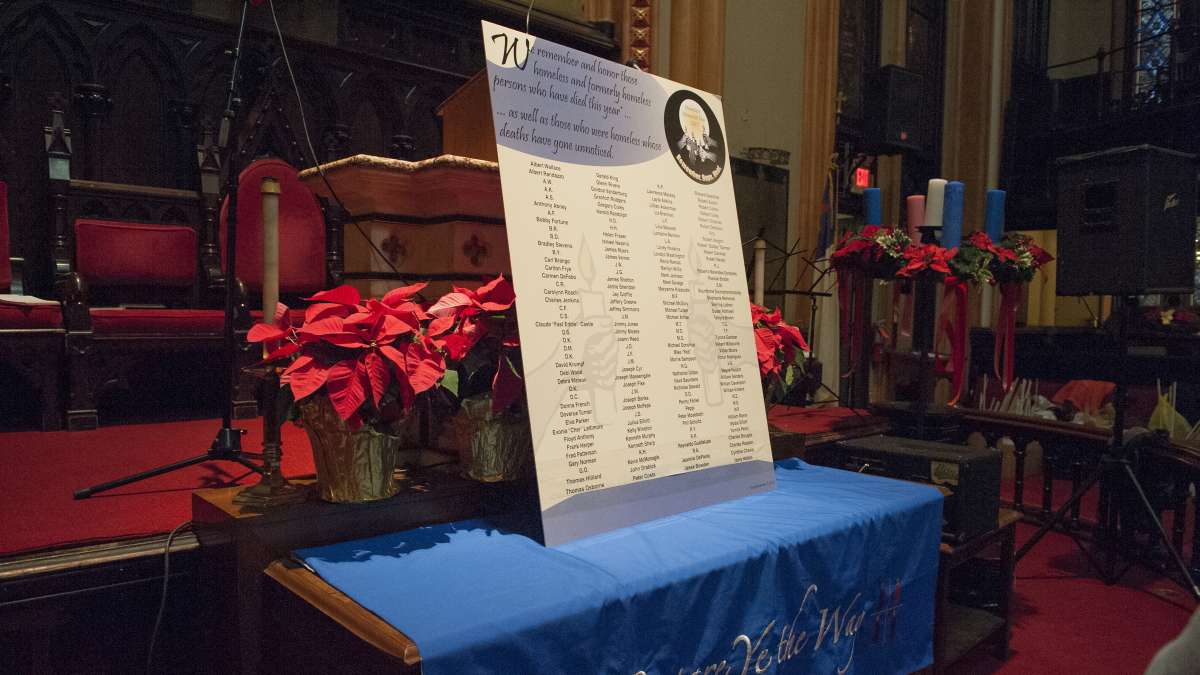
A sign with the names of more than 100 deceased homeless men and women sits on the altar of the Arch Street United Methodist Church. (Jonathan Wilson/for NewsWorks)
Every year for two decades, hundreds have gathered in Philadelphia for a somber holiday-time tradition: a memorial service for the homeless who died in the city over the past year.
While the group usually gathers in the cold near Philadelphia City Hall, an unseasonably warm rain Thursday forced the memorial service inside the Arch Street United Methodist Church.
With words and music, homeless and formerly homeless people, as well as their advocates, remembered the 163 people who have died so far this year.
Homeless Memorial Day is observed in 150 cities and towns around the United States, and this year’s event in Philadelphia focused on the hundreds of young people who live on the streets.
“I believe the first person to die on the streets of Philadelphia in 2015 was a young adult,” said Sister Mary Scullion, the founder of Project HOME.
Scullion echoed many activists at the service who said homelessness among young people is a growing problem in the city and around the country.
However, the number of homeless youth is difficult to pin down — in part, because many of them take refuge on friends’ couches and go unseen by those who are able to help them.
John Ducoff, executive director of Covenant House Pennsylvania, said the shelter in Philadelphia takes in about 500 young people a year — and turns away 400 more.
“Our kids, they’re teenagers, and what teenagers care about is how they’re seen, so our kids work very, very hard to not be known they’re homeless,” Ducoff said. “In many ways, it makes them an invisible population.”
Ducoff said events such as this annual service not only honor the dead, but help make sure those who are still living are not invisible.
Michael O’Bryan with the Village of Arts and Humanities spoke about his mother who was homeless between the ages of 12 and 14 after she ran away from abusive foster parents. He said her story has made him compassionate toward the homeless adults he sees on the streets.
“A lot of the folks who we’re honoring tonight, who have passed and experienced this issue or passed while experiencing this issue, often commented that it started in their youth – in their teenage years or in their early adulthood years, and that it continued in cycles,” O’Bryan said.
Elvis Rosado was 20 years old and addicted to drugs when he became homeless. Now in his 50s, no longer living on the streets and working as an education coordinator at Prevention Point Philadelphia, Rosado said he believes everyone — no matter his or her age — should be able to get help.
“I’m a big believer that at the only point that you have no more chances left is once you’ve passed,” he said. “Until then, as long as you’re breathing, there is the possibility for change.”
WHYY is your source for fact-based, in-depth journalism and information. As a nonprofit organization, we rely on financial support from readers like you. Please give today.




